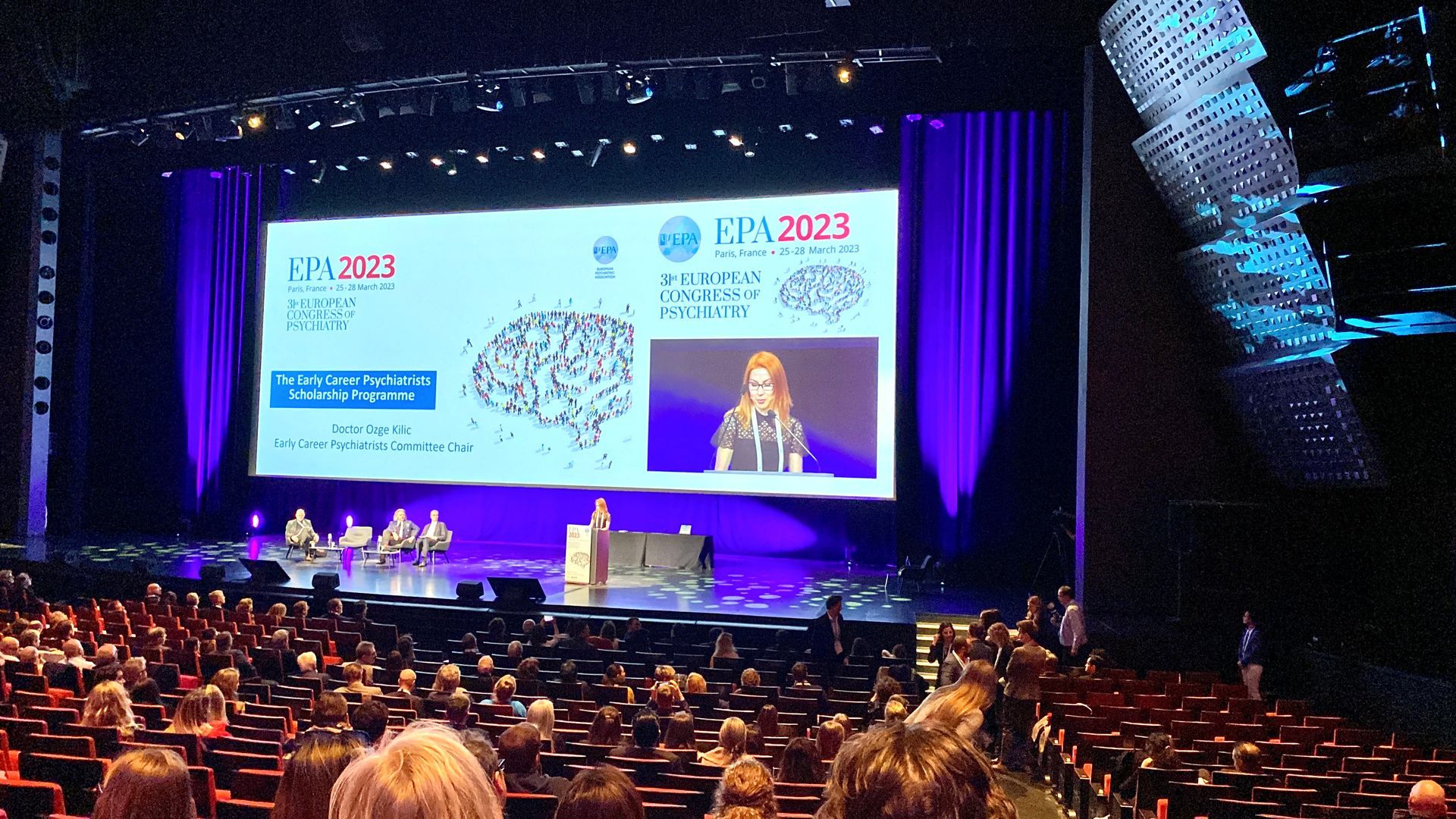How a Physician Treats ADHD with Combination Therapy
ADHD combination therapy, using a stimulant and a non-stimulant to reduce symptoms of attention deficit hyperactivity disorder, can improve behaviors with fewer side effects. Here, an ADHD physician explains the science and method behind treating patients with combination therapy
When people ask me about the latest, greatest ADHD medication, my answer often disappoints them. “I don’t know which medication is right for you,” I say, “but I know how to help you find the right one(s).”
I discovered “combination therapy” by accident. The term refers to using a stimulant and a non-stimulant to reduce ADHD symptoms. There were no lectures in medical school on this therapy and no studies of it yet, in 2000, when I started my ADHD practice. I learned about it from my patients, who noticed that it did a very effective job of helping them manage symptoms.
In 2003, a very different ADHD medication, called a non-stimulant, was released. It was named atomoxetine (Strattera), and it promised to be the best medication ever. On paper, that is. Early reports seemed to promise positive and consistent effects, without the medication wearing off at 5 p.m., sleep problems, growth or appetite suppression, and monthly calls for a new prescription.
In my practice, we couldn’t wait to try it. We asked 35 parents to do a cross-titration study. Thirty-five children took half their stimulant dosage plus half the atomoxetine target dosage for two weeks, then they switched to taking only atomoxetine. This was done in recognition of the fact that atomoxetine effects need time to accrue.
We guessed that half of our patient families would prefer the new medication, but, once again, patients taught us something that the research had failed to predict. Half of them asked us to continue both medications. We decided to believe the patient reports and continue this novel therapy, even though there were no studies available to support this practice at the time.
[Take This Test: Do I Have ADHD? ADD Symptoms in Adults]
The combination therapy patients continue to do very well. Most decreased their stimulant dosages substantially. Side effects were fewer than those for patients who were taking only stimulants. Waking up was less torturous and the process of getting ready for school was smoother. Family life was better, without the meltdowns that many families accept as “normal” as stimulants wear off.
In 2006 I talked with Timothy Wilens, M.D., who was doing a study of combination therapy at Harvard’s neuro-psychopharmacology study center. They were using high-dose combination therapy with atomoxetine (Strattera) and OROS-methylphenidate (Concerta). The results were mind-boggling. Patients who completed the study had remission-level responses— (SSRs) of more than 90 percent. Dr. Wilens’s patients weren’t just a bit better; their ADHD symptoms were gone and their attention was normal.
The dosages of medication required to obtain these results caused intolerable side effects in many of the patients. This is a common issue in dose-optimization studies, because participants are asked to tolerate side effects in order to measure the best improvement technically possible.
Dr. Wilens was using high doses of both medications in his study, but my combination patients were on much lower dosages, and we were not seeing an increase in side effects. Elias Sarkis, M.D., and I published data from our practices in a 2015 study, which showed what most subsequent studies have shown — side effect rates were the same for combination therapy and monotherapy.
[Get This Free Download: The Ultimate Guide to ADHD Medication]
Most adult patients in my practice who take extended-release stimulants need average to high dosages to achieve optimal symptom reduction. They typically report eight to 10 hours of medication benefit, and most require short-acting supplements to treat their evening symptoms. In contrast, most patients on combination therapy take low- to moderate stimulant dosages, and report duration of benefits of more than 12 hours.
Better ADHD Symptom Control through Combination Therapy
In the past, when a stimulant medication gave only partial benefit at standard, FDA-approved dosages, it was common to continue titrating to higher dosage ranges. After years of experience with combination therapy, I rarely use these dosages. If a stimulant does not address symptoms at standard dosages, it usually makes more sense to treat remaining symptoms with a second medication. Here are examples of how combination therapy worked for two patients of mine:
Heidi is a 28-year-old working mother with ADHD-C. I treated her with 72 mg/day MPH-ER (Concerta). Her organization and attention improved, but she still experienced impairing symptoms during the workday — difficulty completing work and poor frustration management. Her ADHD-RS (rating scale) symptom score was 32, and her symptom score reduction (SSR) was 25 percent. The medication’s effects wore off by 6 p.m. At home, family life was difficult, and she was dissatisfied with her parenting. She had nothing left for her children. So we changed her treatment plan: I decreased MPH-ER Concerta to 54 mg/day and added atomoxetine (Strattera) 40 mg/day.
At Heidi’s one-month visit, her symptom score decreased to 14, and her SSR increased to 65 percent. She had much better symptom control in the evening during family time. She felt less anxious. We talked about further reducing her stimulant dose. I decreased Concerta to 27 mg/day and increased atomoxetine to 60 mg/day.
At Heidi’s next six-month visit, she reported that her symptom reduction was very good in the evening. Stimulant effects declined much more gradually, and she couldn’t pinpoint when they wore off. Her ADHD-RS score was 10, and her SSR 80 percent. Her supervisor had noted several improvements on her latest performance review at work. Family life was better when she got home from work, although still a challenge. Heidi has taken that combination for several years without loss of effectiveness.
Better Side Effect Profile with ADHD Combination Therapy
Side effects are the most common reason people with ADHD skip or stop their stimulant medication. “The effects are great during the week, but I have to relax and catch up on my sleep on weekends,” says my patient Eugene. “Some days, I just don’t want medicine that makes me feel like getting something done every minute.”
Eugene is a 20-year-old college student who has gotten decent grades since starting treatment during his freshman year. He was taking 40 mg of Adderall XR, and it helped him focus in class. He needed a 10 mg “booster dose” of amphetamine in the evening to help him do homework. His typical day started at 10 a.m. and ended at three or four the next morning. With ADHD treatment, his rating scale symptom score improved from 46 to 20, and his GPA improved from 1.5, in his first semester, to 2.8 in his sophomore year. Coaching had improved his study habits, but procrastination and end-of-semester cram-fests were still there. He disliked “the feeling of being medicated.”
I changed his treatment plan by adding 40 mg of atomoxetine and decreasing Adderall to 30 mg. I did this over the summer, because he was worried that his grades would fall on the new treatment plan.
At his one-month visit, his rating scale symptom score dropped to 15, and his symptom score reduction shot up to 67 percent. He didn’t feel the need to skip his medication on weekends, and took it every day, “unless I slept in too much.”
I switched Eugene to 50 mg of lisdexamfetamine (Vyvanse) and continued atomoxetine 40 mg. (There is only 20 mg of amphetamine in this dose of Vyvanse, so it represents a two-thirds reduction in his stimulant dosage.)
When I saw Eugene at his next six-month visit, his rating scale symptom score had dropped to 12 (SSR 74), and his GPA for the fall semester went up to 3.2. In addition, Eugene had finished some papers ahead of time (for the first time in his life) and he didn’t have to stay up all night cramming for his finals. He was able to take his medications every day. “I feel like myself now, not like the medication is driving me.”
Issues or Problems with ADHD Combination Therapy
Not everyone improves as much as Heidi and Eugene. Combination therapy is often more expensive than using one medication, although stimulant dose reduction sometimes balances the cost of taking the second medication.
In addition, trials to select and fine-tune the second medication can be challenging for providers. I use atomoxetine, but other practitioners add guanfacine, bupropion, and antidepressants to a stimulant, all of which can be effective.
Dr. Anthony Rostain, Professor of Psychiatry and Pediatrics at the University of Pennsylvania, and co director of the Penn Adult ADHD Treatment and Research program, for instance, says he often uses alpha- agonists, like guanfacine or clonidine, to treat children and adults. “These [non-stimulants] work around the clock and can counteract some of the side effects of the stimulants. They’re also very good for other symptoms like anxiety or reactivity.”
Some prescribers may not be aware of combination therapy, and others may be uncomfortable about it, as I was initially. It is important to do a trial if you think it may help. A trial of combination therapy is not a decision to treat. It’s just a trial to see if better is possible.
“The important thing to keep in mind if you’re combining agents”, Rostain says, “is to be sure that the patient understands how to use each one, how to dose each one. Make sure they understand the inherent challenges they’re going to face, and to make sure you’re paying attention to the side effects that might emerge from the combination of stimulant and nonstimulant.”
[Your Free Download Here: 9 Rules for Using ADHD Medications Safely and Effectively]
Oren Mason, M.D., is a physician at Attention MD in Grand Rapids, Michigan. He speaks on ADHD to professional and lay audiences, is a consultant on medication safety, and a researcher.
Šaltinis: Nuoroda





